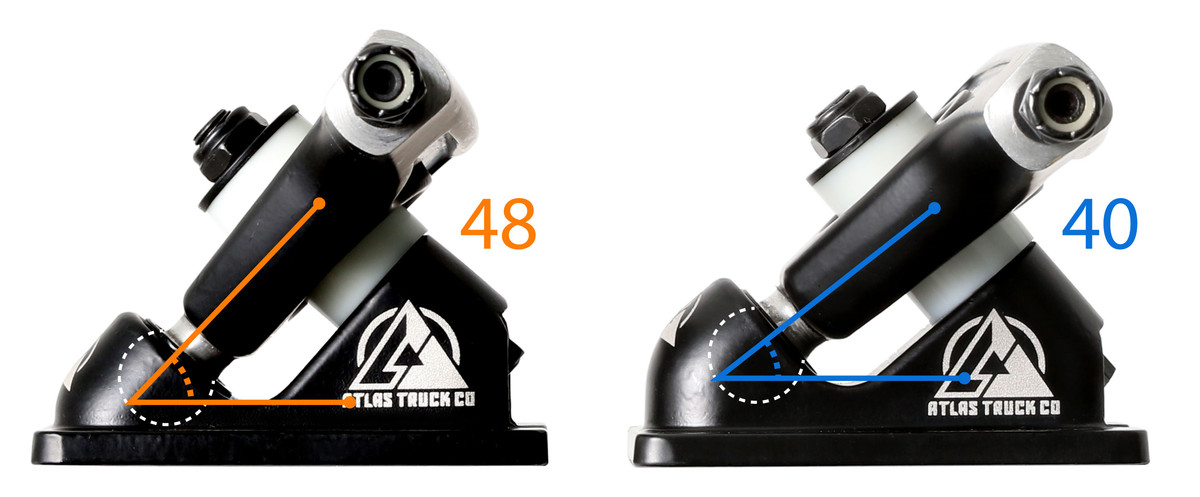Longboard Truck Baseplate Angles: 40 Degree vs 48 Degree

Baseplate Angles Explained
Longboard trucks are manufactured in a variety of different geometric designs. Baseplate angle is just one area where trucks may differ. The angle of your baseplate is a very important decision to make when selecting the right pair of longboard trucks for your desired use and preference. In this article we'll explain how it all works and what will work best for you.
How Baseplate Angle is Measured
Baseplate angle is measured based on the relationship between the mounting plate, the center of the bushing seat, and the center of the pivot. The angle at which the flat plane of the baseplate collides with the line created from the center of the bushing seat and the tip of the pivot defines the baseplate angle.

How Baseplate Angle Affects Truck Performance
Base plate angle has a huge affect on the following performance characteristics of your trucks:
- Turning Radius - As baseplate angle increases turning radius decreases. That means a 48 degree truck will turn more sharply and more quickly than a lower degree baseplate like a 40 degree. Higher angle baseplates are best for cruising, carving, freeriding, and any discipline where fast and reactive turning ability is desired. Lower angle plates are better for downhill or long distance pushing where a stable less reactive platform may be desired. The diagram below refers to the "turn" differences in our trucks.

- Lean - This is the amount your board will "lean" over as you make a turn. Lower angle baseplates produce more lean while (with less turn) while higher angle plates lean less (but turn more). High angle plates take very little lean to turn while low angle plates take more lean to turn. Less lean means more response - great for quick reaction from your board. More lean means less response, ideal for stability. The diagram below refers to lean in our truck options.

- Perceived Stability - Additional lean and a larger turning radius can make lower degree trucks feel more stable at higher speeds. Since your board leans more on a lower degree truck small shifts in weight are absorbed more by the lean and have a tendency to produce a less "wobbly" affect. If you are regularly pushing speeds upwards of 35mph you might consider a more lower degree baseplate for it's added stability.
What Longboard Truck is best for you?
A lot of this comes down to personal preference. If you are a beginner looking to carve, cruise or freeride go with a higher angle truck design (48 degree), if you are experienced and looking to add some stability to your set up, a lower degree (40 degree) baseplate may be for you.